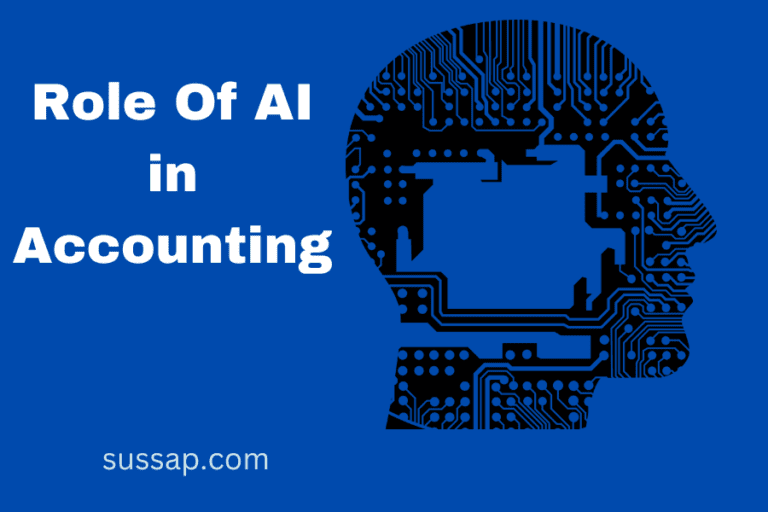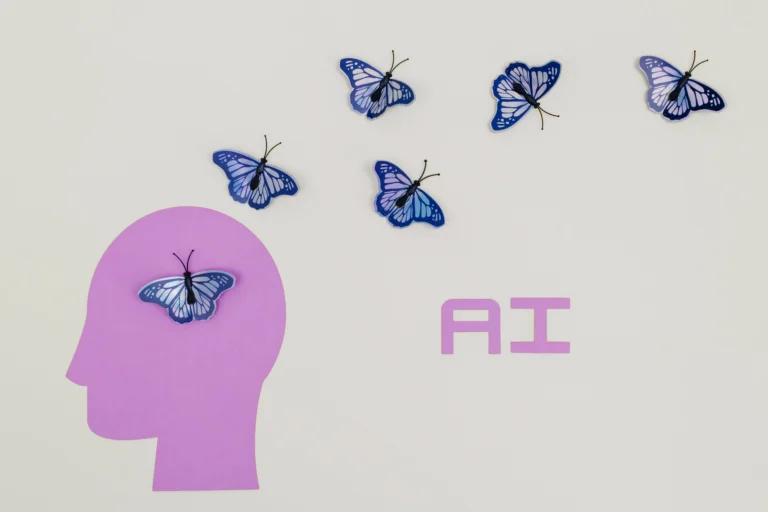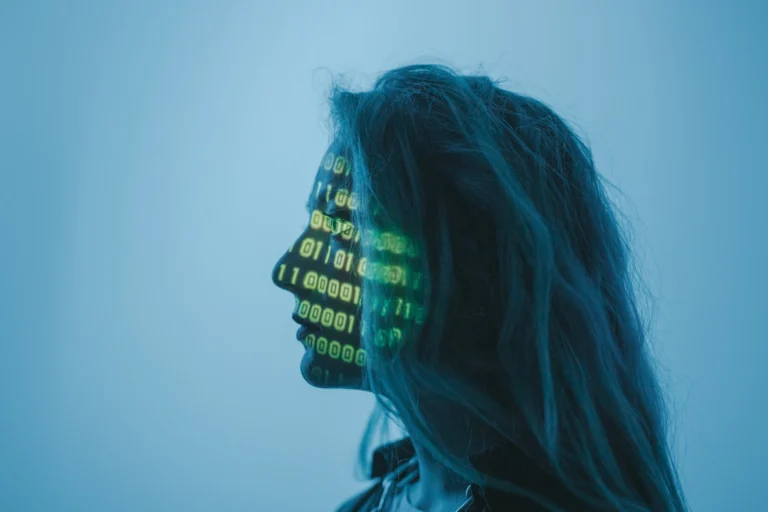Artificial intelligence (AI) and deepfake technologies are rapidly advancing, presenting exciting opportunities as well as concerning risks. This emerging generation of synthetic media powered by AI algorithms has incredible potential for both benefit and harm. In this comprehensive article, we will explore the promise and perils of these double-edged innovations.

A Primer on AI and Deepfakes
Before analyzing the pros and cons, let’s ensure we understand what these terms mean:
What is Artificial Intelligence?
Artificial intelligence (AI) refers to computer systems that can perform tasks normally requiring human intelligence, such as visual perception, speech recognition, and decision-making. The core components of AI include:
- Machine learning – Algorithms that improve through experience without explicit programming
- Neural networks – Computing systems modeled after the human brain’s network of neurons
- Natural language processing – The ability to understand and generate human speech and text
AI capabilities and applications are rapidly advancing. AI systems can now rival or surpass human skills in many domains from chess to medical diagnosis. The global AI market is projected to exceed $500 billion by 2024.
What are Deepfakes?
Deepfakes leverage AI to create synthetic media that depicts events that never occurred. This is done by swapping one person’s face or voice onto another person’s body. The term comes from “deep learning” AI and “fake” media.
To create a deepfake video, an AI model analyzes images and videos of a target person to replicate their facial expressions, mannerisms, and voice. This synthetic data is then overlaid onto existing video footage featuring someone else’s body.
Deepfakes can also fabricate totally imaginary audio or video to generate fake nudes. As the technology improves, deepfakes become incredibly realistic and difficult to detect.
The Promise and Potential of AI
While risks exist, AI has incredible potential to benefit humanity if harnessed responsibly. Here are some of the most promising applications of this transformative technology:
Healthcare Advancements
AI is poised to revolutionize medicine and improve patient outcomes through:
- Earlier and more accurate disease diagnosis powered by AI analysis of medical images and health records
- Personalized medicine tailored to each patient’s genetics and lifestyle via AI assessed biomarkers
- Robotic surgical assistants that enhance precision, consistency, and access to complex procedures
- Automated patient monitoring and dosage adjustments for improved safety and efficacy
In addition, AI chatbots and virtual assistants are making healthcare more accessible and affordable.
Business Innovation
Across every industry, companies leverage AI to work smarter and drive innovation by:
- Automating routine administrative and analytical tasks to boost efficiency
- Generating data-driven insights from vast amounts of information to inform strategic decisions
- Providing 24/7 customer service through conversational AI chatbots
- Personalizing recommendations and content for each user based on AI assessment of preferences
This enables businesses to optimize operations, forecast trends, risk-assess new markets, and deliver superior customer experiences.
Environmental Sustainability
AI tools help us better understand and protect the planet via:
- High-resolution satellite imagery analysis to detect changes in vegetation, water resources, and human infrastructure over time
- Complex environmental modeling to predict the effects of climate change and human activity
- Optimizing energy grids to balance supply and demand, reduce waste, and incorporate renewable sources
- Monitoring air/water quality and sources of pollution
- Tracking endangered species and poaching activities with automated cameras
Education and Learning
Students benefit from AI in many ways:
- Adaptive learning software tailors instruction to each student’s level and needs
- Intelligent tutoring systems simulate one-on-one human tutoring to identify and fill knowledge gaps
- Automated essay scoring and plagiarism checks enhance feedback and integrity
- Personalized education agents recommend customized resources to supplement classroom teaching
- Immersive simulations create safe practice environments for skills from surgery to flying
Transportation and Mobility
AI automation will profoundly change how we get around through:
- Self-driving vehicles that increase safety, accessibility, productivity, and efficiency
- Intelligent transportation systems that model traffic patterns in real time to optimize transit networks
- Computer vision for enhanced pedestrian, cyclist and driver alertness to potential hazards
- Logistics automation from warehouses to last-mile delivery
Related: Can AI Change Entertainment?
Deepfake Positives and Possibilities
In addition to AI in general, deepfake technology specifically also provides many promising applications, though most remain under development:
Visual Media Production
- Seamless visual effects in films, TV, and advertising by replacing actors with digital doubles that allow dangerous stunts without risk
- Animated interactive content by mapping user’s facial expressions and motions into virtual environments
- Reduced production costs by digitally compositing scenes and settings rather than building expansive physical sets
Communications
- Virtual assistants with familiar, personalized faces and voices for banking, customer service, and smart homes
- Augmented video conferences where participants appear as life-like avatars free from lags and distortions
- Synthetic voice regeneration to preserve the unique voices of those who lose the ability to speak due to age or disease
Training and Simulation
- Tailored digital patients and coworkers to practice diagnosis, communications, and teamwork skills
- Fictional scenarios created with deepfakes to safely simulate crisis situations for disaster response training
- Onboarding employees by engaging with a deepfaked version of the company founder to learn the organization’s history and mission
Historic Preservation and Recreation
- Restoring damaged photos and video by using AI to fill in missing pieces
- Bringing black and white photos to life in colorized deepfakes
- Recreating voices of historical figures to narrate documentaries and museum exhibits
Concerns and Dangers of AI
However, along with great opportunity comes great risk if development and use of AI is not thoughtfully governed. Here are the most pressing issues raised by experts:
Job Loss and Economic Disruption
- AI automation could disrupt entire industries and eliminate certain categories of jobs. Truck drivers, manufacturing workers, and clerical roles may no longer be necessary.
- This necessitates policy changes like educational subsidies and universal basic income to transition displaced workers.
Perpetuating Biases
- AI systems reflect and even amplify existing societal biases if their training data contains imbalanced demographics, prejudiced associations, or discriminatory examples.
- Proactive testing and retraining is required to prevent marginalized groups from being negatively impacted.
Lack of Transparency and Explainability
- The complexity of many advanced AI models makes their decision-making processes opaque and uninterpretable to humans. But blind trust in AI predictions is dangerous.
- Regulations may be needed to require explanation of AI system reasoning, similar to “right to explanation” laws enacted for users of automated decision systems in the European Union.
Safety and Control Risks
- Sophisticated AI systems with freedom to operate autonomously could behave in unexpected, harmful ways that humans cannot necessarily foresee or manage.
- Safeguards like human oversight, ethical programming, and contained environments can help mitigate uncontrolled AI risks. But as the technology advances, new approaches will be required to ensure safety and prevent unintended consequences.
Deepfake Dangers and Harms
In stark contrast to the many positives, deepfakes pose a wide array of dangers in their current uncontrolled form:
Disinformation
- Highly realistic fake videos and audio generated by deepfakes are incredibly difficult for the untrained eye and ear to detect. This enables wide propagation of disinformation.
- Politicians and public figures could appear to make inflammatory remarks or admissions that never really occurred. News reporters could seemingly broadcast staged or entirely fabricated events.
Fraud and Impersonation
- Deepfaked faces and voices make it possible to impersonate people and thereby steal money, gain unauthorized access, or ruin reputations.
- Scammers could deepfake a loved one or someone elderly asking for money or bail. CEOs’ voices could be faked to authorize fraudulent wire transfers.
Reputational Sabotage
- Public figures and celebrities could be inserted into very compromising fake videos and audio clips without their consent, even of illegal or inappropriate activities, which get published and go viral.
- Even if disproven, salacious deepfakes can ruin careers and cast doubt on actual media depicting people.
Violations of Privacy and Consent
- Deepfake software makes it easy for anyone to insert a person into explicit media without their consent. Targets are often women as they are nudify by deep nude apps.
- In some countries, deepfakes have enabled new forms of domestic abuse, blackmail, and exploitation.
Geopolitical Conflict
- State-sanctioned production of sophisticated, malicious deepfakes could trigger tremendous harm. For example, a fake video appearing to show military aggression or use of chemical weapons could spark armed conflict between nuclear powers or draw allied nations into war.
Undermining Public Trust
- As deepfake technology improves, people lose faith in whether any photo, video, or audio they encounter is real rather than manipulated. This confusion and uncertainty fractures public discourse.
- Even if a controversial piece of media is proven authentic, some portion of the audience may dismiss it as fake. This benefits those who wish to duck consequences of their actions by decrying genuine footage as a political deepfake.
The Difficult Balance
Governing the development of AI and deepfakes presents societies with difficult tensions:
- Fostering innovation vs. managing risks
- Taking advantage of benefits vs. preventing harms
- Having access to technology vs. limiting misuse
- Ensuring transparency vs. protecting privacy
There are no easy solutions. Technical and policy experts must collaborate closely to try striking the right balance. With thoughtful governance, the positives could outweigh the negatives.
Looking Ahead
As AI and synthetic media grow more advanced, the line between real and fake blurs. This complicates human discourse, information sharing, and politics in ways we have yet to fully grasp.
To responsibly steer emerging generations of these exponentially accelerating technologies, we need nuanced debate weighing both sides – control versus freedom, regulation versus growth.
If we act thoughtfully, AI and deepfakes could propel humanity into an era of illumination. But we must be vigilant, for these innovations truly are a double-edged sword.





